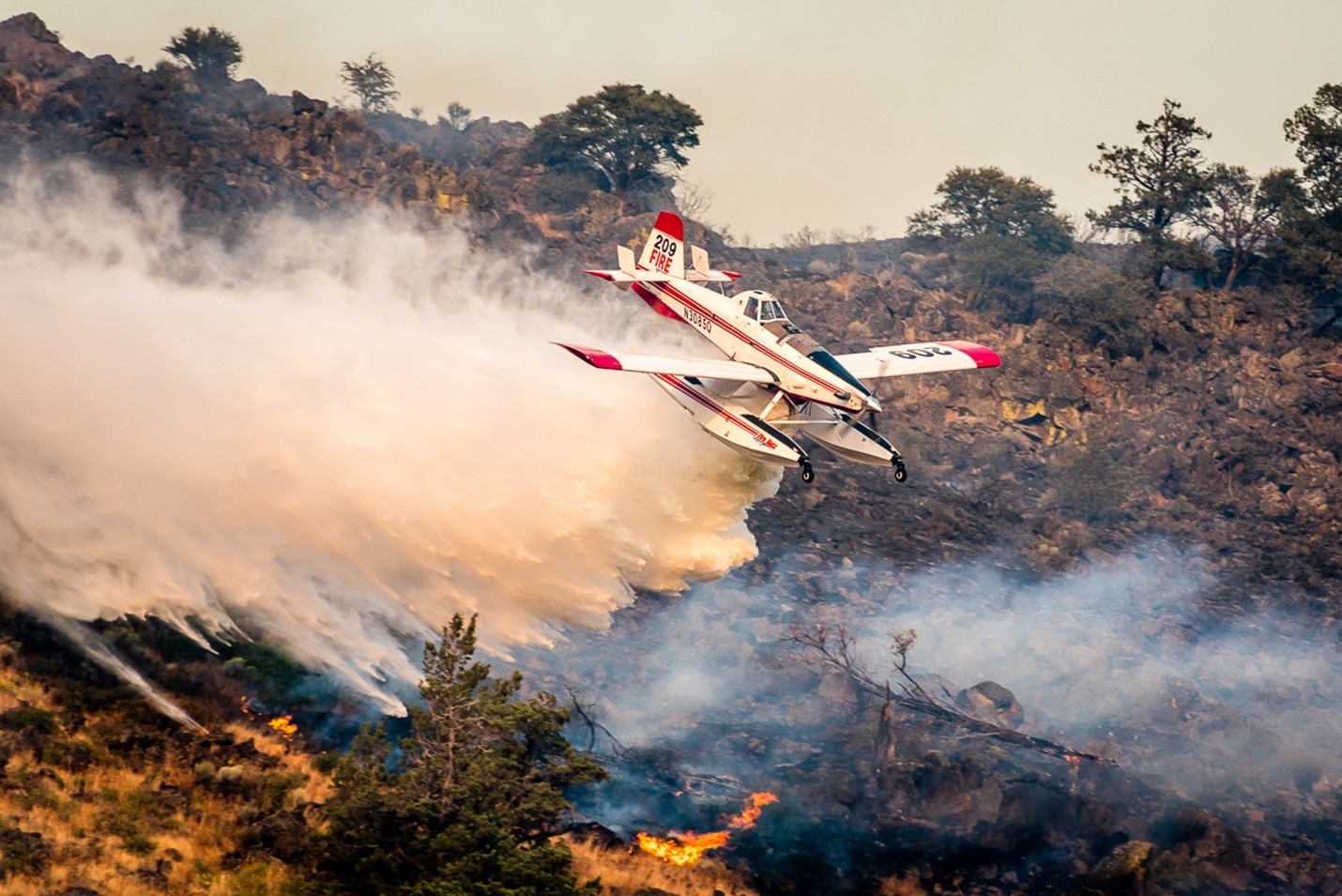Initial attack on wildfires in Alaska's backcountry
National Geographic follows an elite team of smokejumpers
It’s a race against the clock when a small wildfire starts in Alaska’s backcountry. Within minutes of a reported spark, fire agencies can deploy an elite team of smokejumpers and aerial forces to confront and contain a blaze in coordinated initial attack, suppressing the threat before it grows into a larger and more destructive disaster. In the May 2019 issue of National Geographic, the magazine follows part of this multi-resource offensive, telling the story of eight Alaskan smokejumpers responding to wildfires and being supported by aerial resources, like the Fire Boss, in the summer of 2018.
In his article, NatGeo reporter Mark Jenkins traces the origin of smokejumpers, dating back to 1937’s Blackwater Fire, which killed multiple firefighters and consumed nearly 2,000 acres of land. It was a tragic event from which today’s initial attack approach was born:
“A U.S. Forest Service investigation concluded that the only way to avoid such tragedies was for firefighters to attack backcountry fires when they are still small.”
Three years later in 1940, the first smokejumpers were deployed on a wildfire by the Forest Service. From that day on, these initial attack teams, supported by air and ground crews, have proven the value of aggressive initial response:
“Those early years proved that getting men on a fire when it was the size of your living room, rather than thousands of acres, saved money, forests, lives, and private property,” says Chuck Sheley, a retired jumper and vice president of the National Smokejumper Association. “The same principle still applies today.”
Since 1937 we’ve known that initial attack on a small wildfire is the most effective way to save people, land and property from these powerful events. But what has changed since 1937 are the resources and technology available to bolster and optimize initial attack. In the article, NatGeo readers can catch a glimpse of one of these newer resources – the Dauntless Fire Boss 209, which alongside other Fire Bosses supported Alaskan smokejumpers on Fire 320 and other blazes across the state (and around the country). Mr. Jenkins described the sight:
“They zoom in low and release their loads of water, then circle back to Iniakuk Lake, glide over its turquoise surface at 80 miles per hour, scoop up another 800 gallons, and return to drop it on the fire.”
The attack on Fire 320 continues into the next day, as Mr. Jenkins writes “[t]he Fire Bosses roar overhead every four minutes, dropping water. The [smokejumpers] step back but are still drenched.”
Dropping 800 gallons every four minutes, each Fire Boss in an hour can transfer 12,000 gallons of water onto a wildfire (more than the DC-10), supporting on-the-ground crews and other aerial resources in an all-out offensive against the growing threat.
To find out how Fire 320 was suppressed by Alaskan smokejumpers and firefighting aircraft, be sure to pick up a copy of this month’s National Geographic, or, if you have a subscription, click here to read the online version.
For more information on how to strengthen initial response for success in today’s changing wildfire environment, check out recent vision paper.



